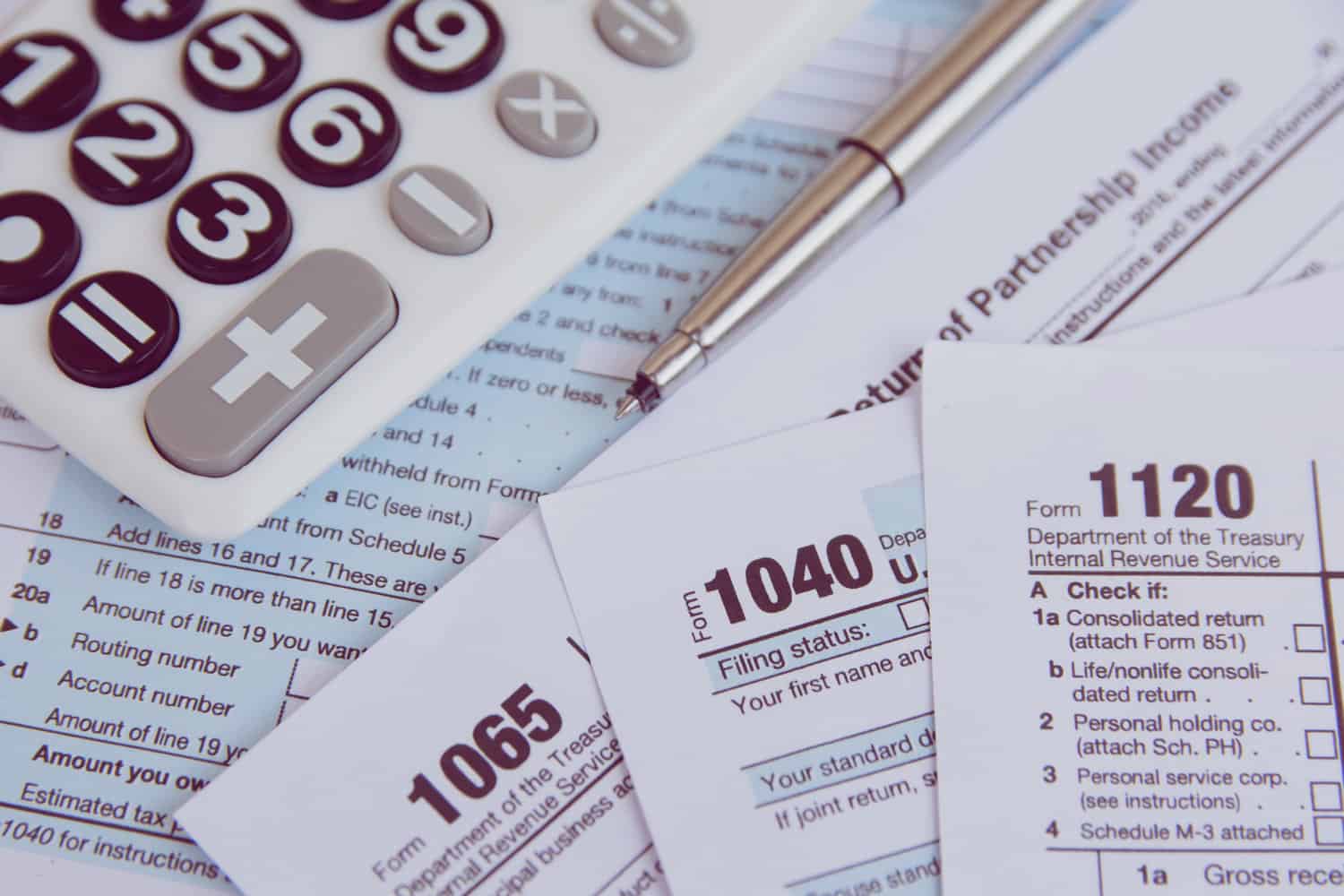The rule of thumb when it comes to selling any asset you own is that, no matter what it may be, you want to come off on top of the deal with a profit, no matter how minuscule.
This profit is known as a capital gain, and it can be any sort of asset that you have at your disposal, including stocks, bonds, precious metals, jewelry and even real estate for that matter.
In order to stop traders from hoarding assets, the higher ups forced a tax that essentially makes you pay on the capital gain, depending on for how long you’ve been holding the asset before you actually sold it, so you can’t really hold out on the capital gain for too long now, or can you?
Capital gains come in two different forms, and they are the following: long-term and short-term. But what are the differences between the two and more importantly, which is more viable for you right now?
So, let’s start off our comparison by first giving you a brief rundown of the two forms out there, starting off with:
What Are Short-Term Capital Gains?
As long as the asset is sold within a year of buying it, you are looking at a short-term capital gain. As such, the capital gain is taxed as a regular income according to your tax bracket.
This tax bracket can range anywhere between 10% to 37%, and because the asset is not held for a long period of time, it is considered to be an ordinary income by the higher ups.
What Are Long-Term Capital Gains?
On the other hand, any profits made from assets that you’ve held in your possession for over a year are considered to be long-term capital gains, and are taxed as such too.
The longer you kept them in your possession, the higher the tax will get when the tax season comes. So, you will be taxed at 0%, 15% and 20%, depending entirely on your taxable income.
So, if you happen to earn around $100,000 a year, then you’ll be in the 15% tax bracket, but if you sold your assets earlier and you were in the short-term capital gains bracket of 24%.
What Are Capital Losses?
We all know what capital gains are here, since after all, our whole careers are made up of these small capital gains. But, while we all know what capital gains are, many people forget that there is such a thing as capital losses too that they should keep in mind.
Capital gains simply refer to anything that you earn over a certain period of time, but as is common with any medium out there, no matter how safe you are with your investments, you will always have to face off with the idea that you may lose some money as well.
That loss of money is referred to as a capital loss, but a loss can also turn into a win if you look at it from a different perspective.
For example, you can use those losses to lower your tax rate, and as such you may tip the scale in your favor in order to make it so that you still end up with an extra zero in your bank account by the end of the day.
So, you can actually just balance your gains and losses by the end of the day and calculate how much you need to pay in taxes with ease like that.
If you lost more than you gained for example, you can just deduct the difference on your tax return, and that in itself can save you as much as $3,000 per year which is no small number.
How to Calculate Capital Gains Tax
If you want to calculate your capital gains tax, you’ll need to do the following:
1. Determine Your Adjusted Basis
If you purchased the asset yourself, then you need to write down the price you paid for it plus any commission, improvements or even fees that you paid for it. If you happened to purchase real estate, the improvement prices will definitely need to be written down somewhere for example.
But purchasing the asset is not the only way to get your hands on it, there is also the inheritance conundrum.
So, if you happened to inherit an asset, then you will need to take the fair market value on the day of the former owner’s death or you can take the fair market value on the day that you received the asset, plus any and all of the commissions, improvements and fees.
But if you happened to receive the asset as a gift, then you will need the original owner’s adjusted basis, plus the commissions, improvements and fees.
2. Subtract Your Adjusted Basis From the Amount You Sold the Asset For
After you do this, you should be able to tell whether you happened to have a capital gain or a capital loss that day.
You can tell which one was the case for you based on whether the number is positive or negative at the end of the subtraction. If you are in the positive, you have a capital gain for example, and if it’s negative then you have a capital loss.
Just keep in mind that losses in themselves are not the end of the world, as they can still help you alleviate the overall losses you’ll get after paying taxes.
3. Reduce the Long-Term Gains by the Amount of Long-Term Losses
When you do this, keep in mind that you can do so by using only the long-term losses that you’ve incurred in that same year or you can go for all of the losses you’ve had over the past couple of years.
This will in turn help you make up a pillow for you to fall on if the taxes get too high and you won’t have to worry about losing too much overall.
4. Revisit the Long-Term Capital Gains Tax Table
For this step, you’ll just need to go back to the bracket which represents your taxable income. From here, find your gross income minus all of the deductions.
You should be able to find the corresponding tax rate by now too, whether that is 0%, 15% or 20%, since it applies to your net capital gain.
If your income happens to be in the six figures, you may be liable for an additional investment income tax, so keep that in mind also.
How to Calculate Short-Term Capital Gains Tax
If you want to actually calculate your short-term capital gains tax though. You’ll need to do the following:
First and foremost, just repeat through steps 1 through 3 that we talked about before, aka determine your adjusted basis, subtract your adjusted basis from the amount you sold the assets for and then reduce the long-term gains by the number of long-term losses.
Next up just reduce the short-term gains by the number of short-term losses that you had so far, either within that year alone or every previous year altogether.
Now just revisit the ordinary income tax table and see which bracket better represents your taxable income. Just remember that this amount should always include your net short-term capital gain too.
The corresponding tax rate is the marginal tax rate that you have, or the rate at which your income will be taxed.
States That Don’t Tax Capital Gains
America is a unique place in this world in which, depending on which state you actually live in, you may find yourself paying less taxes or better yet, paying no taxes per capital gains.
So, if you happen to live in any of these following states, you won’t need to worry about any of this whatsoever:
- Alaska
- Nevada
- Florida
- New Hampshire
- Texas
- South Dakota
- Washington
- Tennessee
- Wyoming
How to Avoid or Minimize Capital Gains Taxes
Believe it or not but you can actually minimize or downright avoid capital gains taxes with ease, as long as you are proactive about it.
You can do so right off the bat by simply holding onto an asset for longer than a year for example, as you won’t be taxed instantly that way.
You can also reduce or completely avoid paying any capital gains taxes through tax-loss harvesting, which is the process of selling all of your underperforming investments.
You will experience a capital loss through that, yes, but that loss will be beneficial for you because you will be able to use it in order to offset your gains taxes.
In the best-case scenario, you’ll be able to completely eliminate the capital gains tax through that, but if there are any leftovers, you will still need to pay it all the same.
Last but not least we would like to bring up the fact that you can also avoid capital gains taxes by simply taking your assets and investing them into tax-advantaged accounts and then donating these assets to charities.
Short-Term Vs Long-Term Capital Gains
The main difference between these two is, as mentioned previously, how long you hold your investment before selling.
So, short-term capital gains happen when you hold onto an investment for less than a year, while long-term capital gains happen when you hold onto that same investment for over a year.
If you happen to go for a short-term capital gain then you are technically just going for small profits that will slowly add up over time.
As such, your return is taxed based on your ordinary income. The rate can be anywhere between 10 to 35%, and it is entirely based on how much you earn throughout that years’ time.
But if you hold onto that asset for well over a year then you are dealing with a long-term capital gain, and as such you should expect your return to be taxed at a lower rate than your ordinary income. This is anywhere between 0 to 20%.
Calculating how much you’ll be taxed by the end of the day is the same, and we talked about it above so if you want to check it out simply read through that segment.
The bottom line is that long-term capital gains are taxed at a lower rate than your ordinary income, so they’re way more favorable than short-term capital gains.
But, at the same time., high returns in swing periods do tend to make short-term capital gains taxes worth it for a lot of people, so definitely keep that in mind.
At the end of the day, it all comes down to this, do you want to make money fast and you just want to buy assets and get rid of them, or do you want to hold onto them and then sell them off after a longer period of time, thus setting your losses to a minimum.
Also, while we are on this subject, there is an exception to this rule, and it is the following: Any and all of the capital gains that are kept within an individual retirement account are tax-deferred, so as long as you don’t take the investments out of your IRA, you’re in the green.
Capital Gains vs Capital Losses
As mentioned previously, no matter how careful you are, you can’t guarantee the fact that you will always be in the plus, nor should you try to do this either.
Taking risks is always the bread and butter of any investor out there, and while seeing a big minus on your investments is never fun, keep in mind that it can also work in your favor if you play your cards right.
We all know by now that the government taxes capital gains, that’s a fact, but what not a lot of people know is that the capital losses can be used to offset these capital gains taxes, balancing out the numbers by the end of the day.
So, make sure to use your capital losses as a way to reduce your income-level tax rates, but just keep in mind that you can’t do this indefinitely.
As of 2020, the official law stated that you can claim as much as $3,000 in capital losses per year, but if you are married filing separately, you will only be able to make up around $1,500 per year.
So, if you see that the numbers are going up a bit too much, which would imply a pretty big chunk of that being taken by the capital gain taxes, you can always just incur capital losses yourself to make up for them.
This is known as the tax-loss harvesting, and it is a lot more common than you may think. You can even use robo advisors to take advantage of the tax-loss harvesting software that they have built-in, although we always recommend that you use your own tax-loss experts to help you clear everything out.
Investment Tips
If you want to make sure that everything works properly though and that you’re not paying any extra taxes at the end of the day, you can always just use a financial advisor to get you through the nitty gritty of it all.
On top of that you might also want to sign up for a robo-advisor, since they tend to offer tax-loss harvesting alongside other options which are sure to help you save money while also minimizing your losses.
Last but not least, we also recommend that you use the tools on these websites to figure out your capital gains taxes. Most platforms have a capital gains tax calculator for example which can help you determine your gains and losses all throughout the year and what taxes you’ll be subjected to.
Conclusion
Investing is never easy, and owning assets for long periods of time can definitely sound like a pretty big commitment if you’re just getting started with everything and you’re afraid of losing too much money.
Just keep your head up and remember that no matter what, you can always bounce back up if you happen to make the right investment once, and never get too discouraged because there is no successful investor out there that has never made the wrong call at least once during their career.
Contents
- What Are Short-Term Capital Gains?
- What Are Long-Term Capital Gains?
- What Are Capital Losses?
- How to Calculate Capital Gains Tax
- How to Calculate Short-Term Capital Gains Tax
- States That Don’t Tax Capital Gains
- How to Avoid or Minimize Capital Gains Taxes
- Short-Term Vs Long-Term Capital Gains
- Capital Gains vs Capital Losses
- Investment Tips















